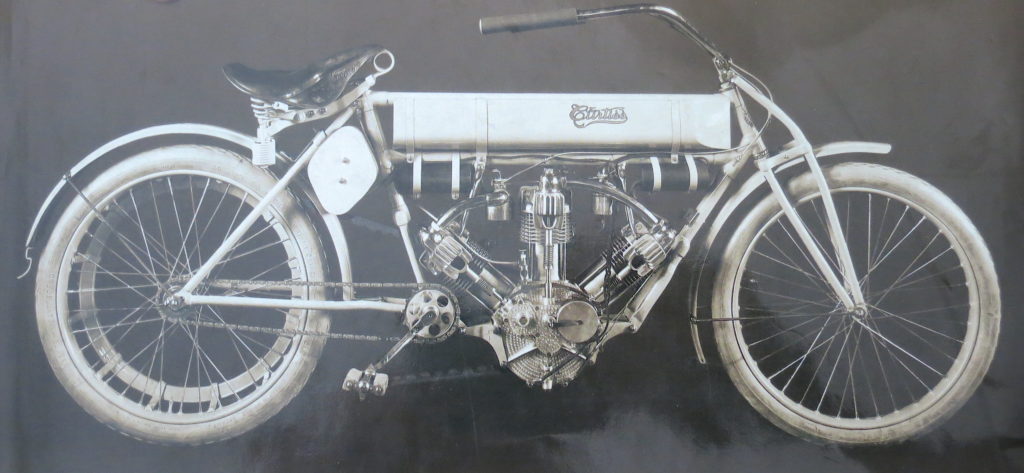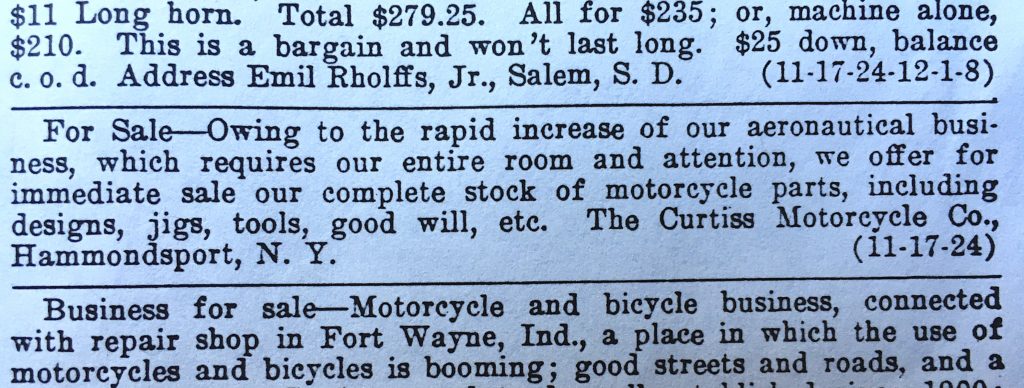
Among the pioneers of American motorcycling, one name often gets overlooked. The contributions of William Harley and the Davidson brothers are well-documented, as are the achievements of Indian’s George Hendee, Oscar Hedstrom, and Charles Franklin. But the work of Glenn Curtiss has largely become a historical footnote.
Two reasons account for Curtiss’ lesser recognition in the moto-history archives: First, he was active as a motorcycle designer and builder for little more than 10 years. Second, his lasting legend in aeronautics soon eclipsed his motorcycling accomplishments.
But from 1901 to 1913, the Hammondsport, New York, native was at the leading edge of U.S. motorcycle development. The former bicycle builder/racer put the first American V-Twin on the market in 1903.
Six years later, Curtiss introduced a 3-cylinder engine, the W-3. While the Triple never went into large-scale production, it exemplified Curtiss’s expanding interest in powered flight. France’s Alessandro Anzani had developed a 3-cylinder aircraft engine, which in 1909 powered Louis Blériot’s inaugural flight across the English Channel.
Curtiss had already built a V-4 for aircraft use, followed by an inline-Four. Unlike Anzani’s Triple, with cylinders spaced at 72 degrees, Curtiss chose to retain the 50-degree angle of his V-Twins, making it more compact for a motorcycle chassis.
Rated at 10 horsepower, and weighing only 175 pounds, the W-3 was reportedly capable of achieving 90 mph. But performance was only marginally better than the proven V-Twin, and the bike’s relatively high $350 price limited its market appeal. Plus, the design, using one carburetor for the two front cylinders and one for the rear, created tuning problems. The Triple was discontinued after only one year in production, with no more than 10 built.
Curtiss always considered himself a developer as opposed to an inventor. While the Triple was not a commercial success, it marked his abiding drive to innovate and push the envelope. And his eye for efficient design, with a firm resolve to minimize weight, put him at the leading edge of American motorcycling in the first decade of the 20th century.
Further development of the W-3 showed little promise, and Curtiss was by then committed to shifting his research and production to aircraft engines. He had established his credentials in 1907 using a prototype air-cooled V-8 in a motorcycle chassis, which set a record of 136 mph on a Florida beach. So, in 1909, he turned the motorcycle business over to his childhood friend Leonard “Tank” Waters, which spawned a new Curtiss design under the brand name Marvel. In 1910, the 500cc Single, dubbed Model Four, was the first overhead-valve engine on the market.
But by then the Indian Motocycle Company had come to dominate the market. For the model years 1912-13 the Springfield, Massachusetts, firm produced more than 50,000 machines, and Harley-Davidson was gaining market share.
With the aircraft business consuming more time and money, in 1913 Curtiss posted a classified ad in Motorcycling magazine, putting the entire inventory of motorcycles, parts, and tooling up for sale. But his 12 years of creative design and engineering had left a lasting mark on the industry.

And what, you may ask, was the other American 3-cylinder motorcycle? That would be the 1915 Williams, with an 876cc rotary engine, originally designed for a helicopter in 1908. Adapted for use in a motorcycle, the engine was mounted within the rear wheel and rotated with it. The stationary crankshaft was also the rear axle. Only four examples were built, and the Williams was never sold commercially.


















